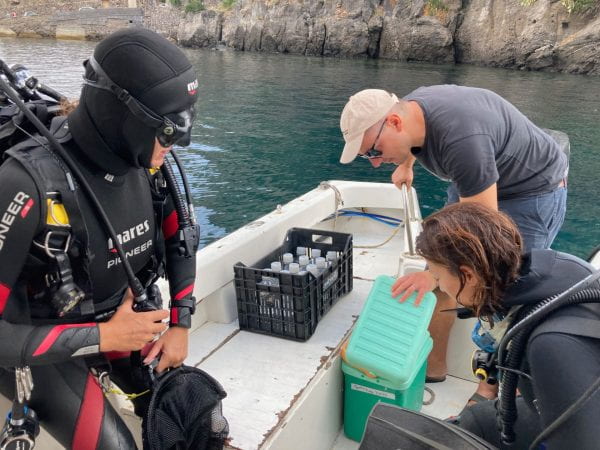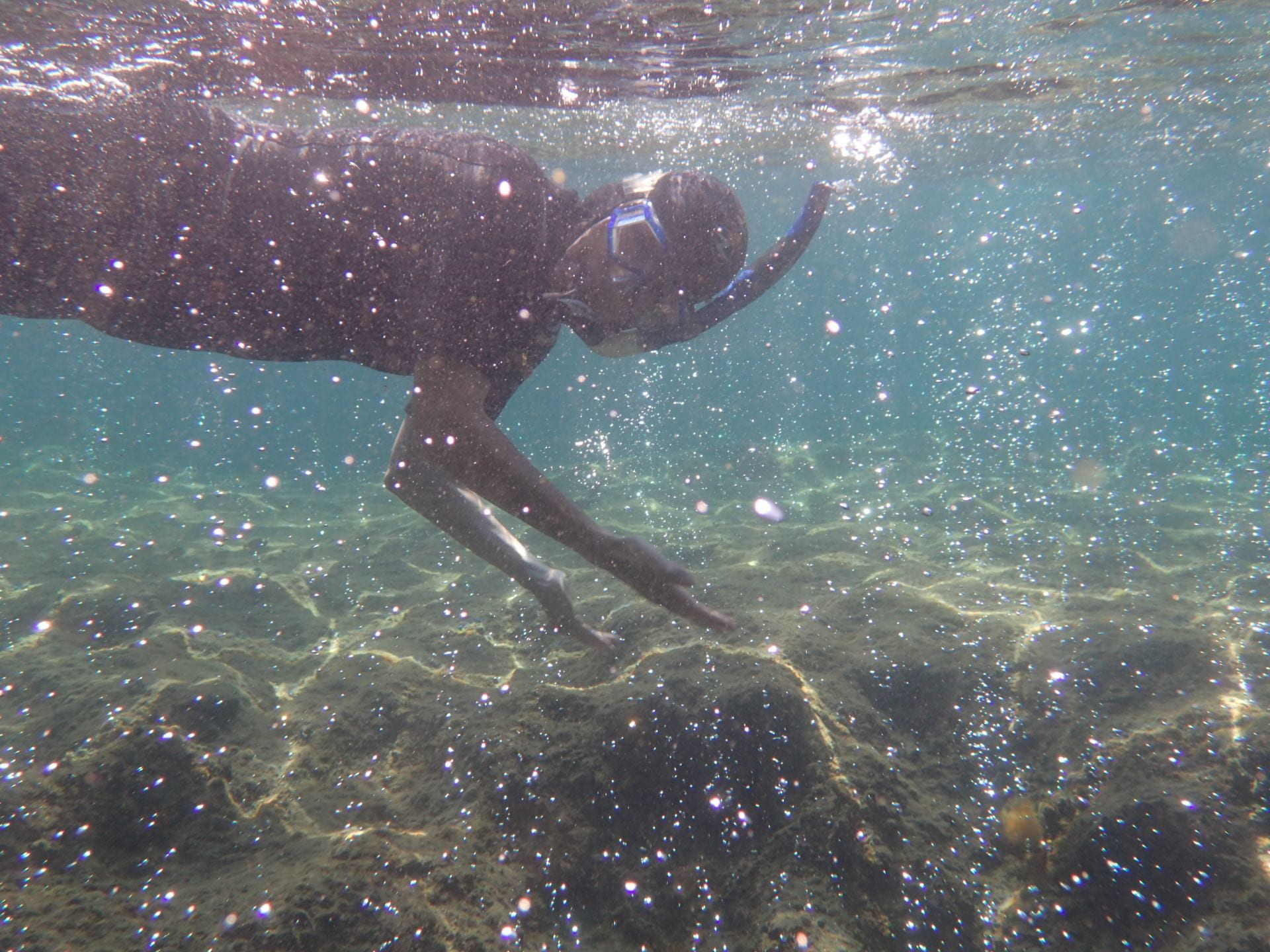ocean acidification
The exchange of increasing concentrations of carbon dioxide at the surface ocean – due to the burning of fossil fuels – is lowering the pH of the surface ocean.
At Tatoosh Island, WA, we have been documenting pH change and species response. Our long-term research supports a scenario of decreasing pH through time, and the declines we have measured are greater than those predicted by models (Wootton, Pfister & Forester 2008, Wootton & Pfister 2012). Ongoing work is continuing to quantify this pattern as well as understand the implications for calcium-bearing organisms and their role in the nearshore community. Our methodology to estimate seawater carbon and its isotopes has been an ongoing collaboration with Albert Colman and Gerard Olack; the ms describing these methods is in Limnology & Oceanography: Methods (Olack et al. 2018).
Interpreting past ocean chemistry
Mussel shells provide encapsulated information about their environment and we have used shell material to understand how ocean chemistry is changing. Both through past researchers on Tatoosh Island and in collaboration with the Makah Museum, we have archival material from several decades ago and multiple centuries ago.
Our work with modern and ancient shells has shown that the carbon isotopes of shells have shown a decline in 13C over the past decade, consistent with increasing fossil fuel uptake by the ocean. Our paper published in PLoS ONE in 2011 shows these results:
2011. Pfister, C. A., S.J. McCoy, J. T. Wootton, P. A. Martin, A. S. Colman, D. Archer. Rapid environmental change over the past decade revealed by isotopic analysis of the California mussel in the northeast Pacific.
http://www.plosone.org/article/info%3Adoi%2F10.1371%2Fjournal.pone.0025766
Further, these animals had thicker shells in the past compared to modern animals (Pfister et al. 2016, Proceedings of the Royal Society B). Further analysis by Sophie McCoy and colleagues demonstrated that shell mineralogy has changed and the shell matrix is increasingly disordered in modern shells compared to the past (McCoy et al. Global Change Biology, 2018).
We are grateful to the Makah Cultural and Research Center and the Makah Tribal Council, as well as the Olympic National Park for access to research materials.
Coralline Algae Reveal a Changing Environment
Sophie McCoy, a graduate of the lab and now faculty at Florida State University, has been studying the effects of ocean pH changes on crustose coralline algae. She finds crust thinning in the previous dominant competitor (McCoy 2013), as well as a reversal of fortune for the top competitor. Compared with Bob Paine’s experimental investigations of coralline overgrowth in the 1980s, Sophie has documented increased losses by the top competitor and a quantitatively changed interaction network in nature (McCoy & Pfister 2014, Ecology Letters) and in silico (McCoy et al. 2016, Proceedings of the Royal Society B).
Will species adapt to changing ocean pH?
Graduate student Mark Bitter finds that mussels have standing genetic variation to respond to ocean acidification (Bitter et al. 2019, Nature Communications). He has contrasted areas with variable versus constant pH, both in the field and in controlled mesocosms, to ask whether species from variable environments will be at an advantage in a changing ocean. Mark’s research was hosted by Drs. Jean-Pierre Gattuso and Lydia Kapsenberg at the Laboratoire d’Océanographie de Villefranche-sur-Mer in France. We thank the France and Chicago Collaborating in the Sciences (FACCTS) program for support.
_____________________________
See The New York Times article about our work related to climate change
See a video about our research about ocean acidification made by Oregon Public Broadcasting
Link to a University of Chicago blog about our work demonstrating rapid decline in the stable carbon isotope value of mussels shells on Tatoosh Island
For more about this important topic, see the Ocean Carbon and Biogeochemistry site for the Ocean Acidification subcommittee.
The CO2 Vents at Ischia, Italy reveal alterations to the function of microbes in association with the seagrass Posidonia oceanica
From National Geographic, 2016


Collaborative work in Ischia with Nuria Teixedo, Ulisse Cardini, Jean-Pierre Gattuso, Alice Mirasole, and Luis Montilla show a diveristy of microbial nitrogen metabolisms in association with Posidonia, but decreased function in proximity to CO2 vents.




Media coverage of our ocean acidification work
See The New York Times article about our work related to climate change
See a video about our research about ocean acidification made by Oregon Public Broadcasting
Link to a University of Chicago blog about our work demonstrating rapid decline in the stable carbon isotope value of mussels shells on Tatoosh Island
For more about this important topic, see the Ocean Carbon and Biogeochemistry site for the Ocean Acidification subcommittee.
